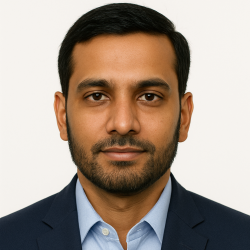The concept of sustainable development has emerged as one of the most critical frameworks guiding global progress in the 21st century. As humanity grapples with unprecedented environmental challenges, social inequalities, and economic uncertainties, sustainable development offers a holistic approach to meeting present needs without compromising future generations. This paradigm shift recognizes that long-term prosperity depends on balancing economic growth, social inclusion, and environmental protection. The United Nations’ Sustainable Development Goals (SDGs) have further institutionalized this approach, providing a universal roadmap for addressing the world’s most pressing challenges. Understanding and implementing sustainable development principles is no longer optional but essential for creating resilient societies, fostering innovation, and ensuring planetary health for decades to come.
Historical Evolution
The modern concept of sustainable development gained global prominence with the 1987 Brundtland Report, which defined it as “development that meets the needs of the present without compromising the ability of future generations to meet their own needs.” This definition introduced three fundamental pillars: environmental protection, social equity, and economic viability. Prior to this, development models primarily focused on economic growth, often at the expense of natural resources and social cohesion. The 1992 Earth Summit in Rio de Janeiro further solidified these principles, leading to international agreements on climate change and biodiversity. The 2015 adoption of the 17 SDGs marked a pivotal moment, transforming abstract concepts into actionable targets with measurable indicators across 169 specific objectives.
Core Principles
Sustainable development operates on several interconnected principles that guide policy-making and individual actions:
- Intergenerational Equity: Ensuring fairness between current and future generations by preserving natural capital
- Precautionary Principle: Taking preventive action in the face of uncertainty to avoid potential environmental damage
- Participatory Approach: Engaging stakeholders in decision-making processes at all levels
- Systems Thinking: Recognizing the complex interconnections between economic, social, and environmental systems
- Carrying Capacity Operating within ecological limits to maintain resource availability
The Three Pillars Framework
Environmental Sustainability
This pillar addresses the responsible use of natural resources, ecosystem conservation, and pollution reduction. It emphasizes renewable energy adoption, circular economy practices, biodiversity preservation, and climate change mitigation. Key initiatives include reforestation efforts, sustainable agriculture, and the transition to zero-emission technologies. Environmental sustainability ensures that economic activities remain within planetary boundaries, preventing resource depletion and ecosystem collapse.
Economic Viability
Economic sustainability focuses on creating inclusive growth models that provide long-term prosperity. It promotes responsible business practices, fair trade, sustainable consumption patterns, and investment in green technologies. This pillar challenges traditional GDP growth metrics by advocating for indicators that account for environmental and social costs. Social enterprises, impact investing, and sustainable supply chains exemplify economically viable approaches that generate profit while addressing social and environmental challenges.
Social Equity
Social sustainability prioritizes human rights, access to basic services, and inclusive institutions. It addresses poverty eradication, gender equality, healthcare access, education quality, and reduced inequalities. This pillar emphasizes community empowerment, cultural preservation, and safe working conditions. Socially sustainable development ensures that economic growth translates into improved well-being for all segments of society, particularly marginalized populations.
Key Components of Sustainable Development
Policy and Governance
Effective governance structures are fundamental to implementing sustainable development. This includes:
- Integrated Policy Frameworks: Aligning economic, environmental, and social policies across government departments
- Multi-stakeholder Collaboration: Partnerships between governments, businesses, civil society, and academia
- Legal and Regulatory Instruments: Environmental laws, carbon pricing mechanisms, and corporate sustainability reporting requirements
- International Cooperation: Transboundary agreements on climate, oceans, and biodiversity
Technological Innovation
Technological advancement serves as both a challenge and solution in sustainable development. Key technological components include:
- Clean Energy Technologies: Solar, wind, geothermal, and hydrogen power systems
- Digital Solutions: Smart grids, precision agriculture, and resource monitoring systems
- Circular Economy Technologies: Advanced recycling, waste-to-energy conversion, and material science innovations
- Biotechnology: Sustainable materials development and ecological restoration techniques
Education and Awareness
Sustainable development requires widespread understanding and behavioral change. Education initiatives should:
- Incorporate sustainability principles into school curricula at all levels
- Provide professional development for sustainability practitioners
- Launch public awareness campaigns on consumption patterns and conservation
- Foster community-based learning through workshops and local initiatives
Benefits and Importance
Environmental Resilience
Sustainable development practices directly enhance ecosystem resilience. By protecting forests, wetlands, and oceans, societies maintain natural carbon sinks, regulate climate, and preserve biodiversity. For example, Costa Rica’s forest cover increased from 26% in 1983 to over 52% in 2022 through sustainable forest management and ecotourism, demonstrating economic and environmental co-benefits. Similarly, sustainable agriculture practices like agroforestry improve soil health while sequestering carbon, creating agricultural systems that can withstand climate shocks.
Economic Prosperity
The transition to sustainability generates significant economic opportunities. The renewable energy sector employs over 12 million people globally, with projections indicating 38 million jobs by 2030. Circular economy approaches could unlock $4.5 trillion in economic value by 2030 through waste reduction and resource efficiency. Companies adopting sustainability practices often outperform peers financially while reducing operational risks. For instance, IKEA’s commitment to using only renewable and recycled materials by 2030 has driven innovation while building brand loyalty and market differentiation.
Social Cohesion
Sustainable development fosters stronger communities by addressing root causes of inequality. Access to clean water, renewable energy, and sustainable housing improves public health and quality of life. In Norway, the sovereign wealth fund derived from oil revenues provides universal social services, demonstrating how resource wealth can be managed for long-term social benefit. Community-led renewable energy projects in Scotland have reduced energy poverty while creating local employment and strengthening social bonds.
Climate Stability
Climate action represents the most urgent aspect of sustainable development. Limiting global warming to 1.5°C above pre-industrial levels requires rapid decarbonization across all sectors. The International Renewable Energy Agency projects that renewable energy could provide 86% of global power by 2050 with the right policies, creating a more stable climate system. Climate-resilient infrastructure, such as flood-resistant housing and drought-resistant crops, protects communities from increasingly extreme weather events.
Practical Applications
Urban Sustainability
Cities concentrate over half the world’s population and consume 75% of natural resources. Sustainable urban development focuses on:
- Green Infrastructure: Urban forests, green roofs, and permeable pavements that reduce heat islands and manage stormwater
- Public Transportation: Electric bus networks and integrated transit systems that reduce emissions and congestion
- Sustainable Buildings: Energy-efficient construction with renewable energy integration and water recycling systems
- Waste Management: Comprehensive recycling programs and organic waste composting systems
Singapore exemplifies urban sustainability through its “City in a Garden” vision, with 47% green cover and innovative water recycling that meets 40% of demand. Copenhagen aims to become the world’s first carbon-neutral capital by 2025, with district heating systems powered by renewable energy and extensive cycling infrastructure.
Sustainable Business Practices
Businesses increasingly recognize sustainability as essential for long-term viability. Key applications include:
- Supply Chain Auditing: Evaluating environmental and social impacts across all suppliers
- Product Lifecycle Assessment: Minimizing environmental impact from raw material extraction to end-of-life disposal
- Stakeholder Engagement: Incorporating community feedback and ethical considerations into operations
- Impact Measurement: Tracking sustainability metrics alongside financial performance
Patagonia’s “Worn Wear” program extends product lifespans through repair services and resale, while Unilever’s Sustainable Living Plan aims to decouple growth from environmental impact while improving health and well-being.
Community-Based Initiatives
Local communities drive sustainable development through grassroots action. Examples include:
- Transition Towns: Community-led initiatives building local resilience through food production, energy generation, and waste reduction
- Community Gardens: Urban farming projects that improve food security while building social connections
- Tool Libraries: Sharing resources to reduce consumption and promote collaborative consumption
- Local Exchange Trading Systems (LETS): Community currencies facilitating trade without conventional money
The Grameen Bank in Bangladesh pioneered microfinance for sustainable development, providing small loans to empower women entrepreneurs while promoting environmental stewardship. Meanwhile, India’s Self-Employed Women’s Association has organized over 2 million women into cooperatives focusing on sustainable livelihoods.
Frequently Asked Questions
What is the difference between sustainable development and traditional development?
Traditional development primarily focuses on economic growth measured by GDP, often disregarding environmental and social consequences. Sustainable development integrates environmental protection, social equity, and economic viability as equally important pillars. While traditional development may prioritize short-term gains, sustainable development emphasizes long-term resilience and intergenerational equity. For example, a traditional development approach might clear forests for immediate agricultural profit, while sustainable development would evaluate long-term impacts on biodiversity, climate regulation, and community livelihoods before implementing land-use changes.
How do the Sustainable Development Goals (SDGs) work in practice?
The SDGs consist of 17 interconnected goals and 169 specific targets that provide a global framework for action. They work through national implementation strategies where countries adapt global targets to local contexts. Businesses integrate SDGs into corporate sustainability plans, while civil society organizations monitor progress and hold governments accountable. For instance, Goal 6 (Clean Water and Sanitation) drives infrastructure investments, policy reforms, and community education programs. The SDGs’ strength lies in their universality and integrated approach, recognizing that challenges like poverty (Goal 1) cannot be addressed without tackling climate action (Goal 13) or gender equality (Goal 5).
Can economic growth truly be sustainable?
Yes, but it requires redefining growth beyond GDP to include environmental and social indicators. Decoupling economic growth from environmental impact is possible through circular economy models, renewable energy adoption, and resource efficiency. Denmark has demonstrated this approach, growing its GDP by 80% since 1990 while keeping energy consumption flat. Sustainable growth focuses on creating value through innovation rather than resource extraction, emphasizing quality of life over material consumption. This shift requires policy reforms like carbon pricing, subsidies for sustainable practices, and alternative metrics like the Genuine Progress Indicator that account for environmental and social factors.
What role do individuals play in sustainable development?
Individual actions collectively drive significant change through consumption choices, advocacy, and community involvement. Key individual contributions include:
- Adopting plant-rich diets to reduce food system emissions
- Minimizing waste through reusable products and conscious purchasing
- Supporting sustainable businesses and ethical brands
- Engaging in democratic processes to influence policy
- Sharing knowledge and skills within communities
Research indicates that household consumption accounts for 60-80% of global greenhouse gas emissions, making individual choices crucial. The transition














Post Comment